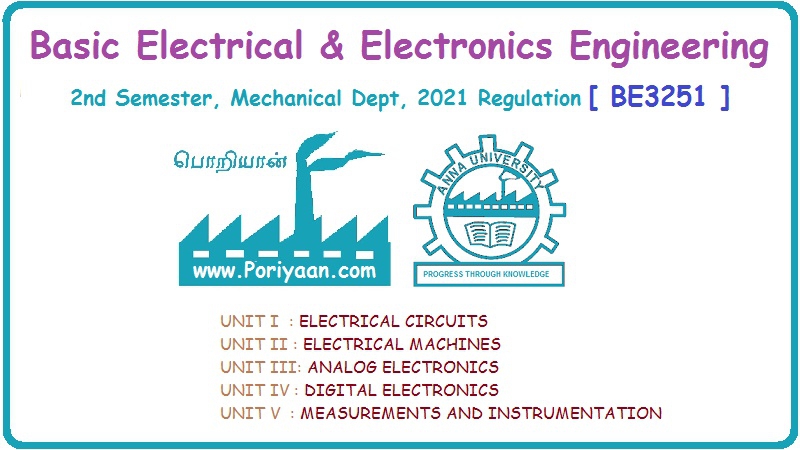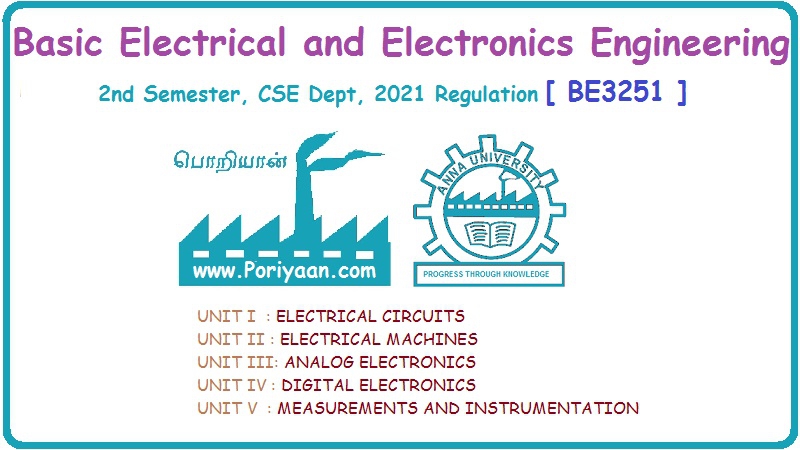Basic Electrical and Electronics Engineering: Unit II: Electrical Machines
Principle of Operation for Single Phase Transformer
A transformer is a static device, which transfer electric power from one circuit to another circuit without change in frequency.
SINGLE
PHASE TRANSFORMER
A
transformer is a static device, which transfer electric power from one circuit
to another circuit without change in frequency.
Principle of Operation
The
transformer operates on mutual induction principle. It states that when two
coils are inductively coupled and if current in the one coil is changed
uniformly then an emf induced in the other coil.
The
Figure 3.40 shows the basic transformer diagram. It consists of two coils they
are primary and secondary windings. The primary winding is connected in the
input power supply and other winding is connected to the load. This winding is
secondary winding. The primary winding has N1 number of turns while
secondary winding has N2 number of turns.
When
the primary winding is excited by an AC voltage, it circulated an AC current. This
current produces an flux (ϕ) which completes its path through common magnetic
core. This alternating flux links with the secondary winding. According to
Faraday's law of an electromagnetic induction, the secondary winding induce the
emf. There is no electrical contact between the two windings.
Basic Electrical and Electronics Engineering: Unit II: Electrical Machines : Tag: : - Principle of Operation for Single Phase Transformer
Related Topics
Related Subjects
Basic Electrical and Electronics Engineering
BE3251 2nd semester Mechanical Dept | 2021 Regulation | 2nd Semester Mechanical Dept 2021 Regulation
Basic Electrical and Electronics Engineering
BE3251 2nd Semester CSE Dept 2021 | Regulation | 2nd Semester CSE Dept 2021 Regulation

